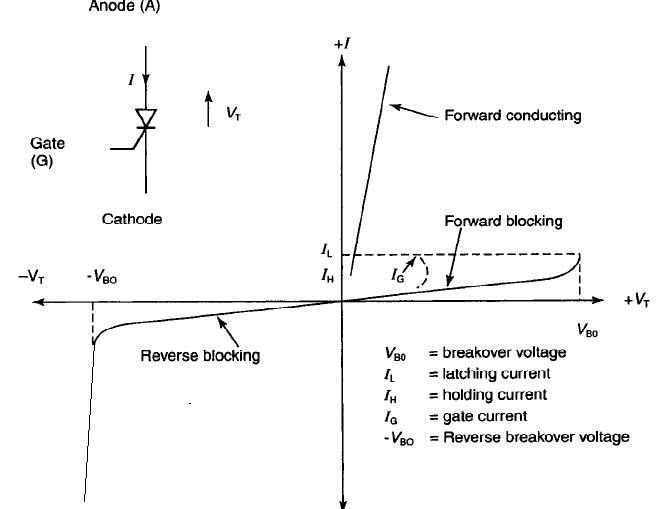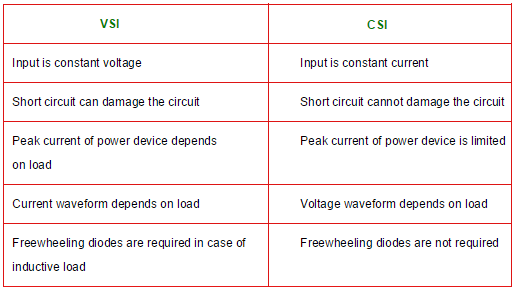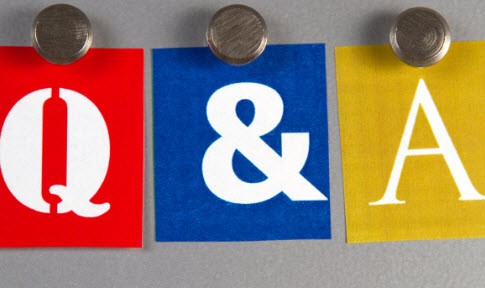[1] What is full converter? What is dual converter?
When positive as well as negative half cycles of the supply are rectified, it is called full converter.
Dual converter:
When the polarities of output voltage as well as current can be reversed then it is said to be dual converter. It operates in all the four quadrants of the VO – IO plain.
[2] What are the advantages and disadvantages of buck/boost regulator?
Advantages
- Provides inverted output
- Both buck/boost operations achieved simultaneously
- High efficiency
- Short circuit protection can be easily implemented
Disadvantages
- Output voltage polarity opposite to that of input
- Voltage stress on switching device in the chopper is high
[3] What is the function of free wheeling diode in semiconverter?
- When the load is inductive, the load current circulates through free wheeling diode.
- Actually, the semiconverter have the inherent freewheeling.
- This freewheeling can take place through one SCR and one diode.
- But if separate freewheeling diode is used, then freewheeling takes place through that free wheeling diode itself. This reduces losses that takes place in SCR and diode.
[4] List the merits and demerits of AC voltage controller
Merits
- They use line commutation, hence no extra commutation circuits are required
- They have high efficiencies, since device losses are reduced.
Demerits
- large ripple and harmonics are present in the output
- Output waveforms are not sinusoidal.
[5] Define the delay angle of phase controlled rectifier
The angle at which thyristors are triggered after zero crossing is called the delay angle. After zero crossing of supply voltage, one pair of thyristors is forward biased. After delay angle (alpha), these SCRs are triggered
[6] What the two types of AC voltage controllers? which one these is preferred and why?
Types of AC voltage controllers:
- ON-OFF type AC voltage Controller
- Phase angle type AC voltage controller
ON-OFF control:
In this type of controller, the full input voltage is applied to output for some number of cycles and no voltage is applied to output for some number of cycles. In this control, output voltage waveform is discontinuous and contains large ripple.
Phase angle control:
In phase angle control, each half cycle of the source voltage is applied partially or fully to the load. Firing angle of the SCRs is charged to control output voltage. Output voltage waveform is continuous but phase controlled.
The type of AC controller which is highly preferred is Phase angle control, because it contains less ripple and discontinuities in output.
[7] What are the effects of load inductance on the performance of an AC voltage controller?
- The load inductance makes the output current to flow continuously.
- With load inductance, the commutation becomes difficult if TRIAC switches are used
- The control fails sometimes due to high inductive load
[8] what are the advantages of GTO over BJT
- Higher voltage blocking capability
- It is majority carrier device
- High ratio of peak surge current to average current
- Operates as a switch always hence on state losses are reduced
[9] Define holding current of an SCR
Holding current is the minimum forward current that flows through the SCR to keep it in forward conduction mode. When forward current reduces below holding current, SCR turns off.
[10] Define string efficiency of SCRs connected in series
String efficiency is given as
η = [VS / nVDI ] x 100
It indicates the amount by which the sting is utilized.
[11] What is PWM? List its various techniques
In PWM the output voltage can be varied by changing the ON pulse width of the switching devices.
Various PWM techniques are
- Single pulse modulation
- Multiple pulse modulation
- Sinusoidal pulse modulation
- Modified sinusoidal pulse modulation
[12] Define modulation index of PWM. What is its use?
The ratio of amplitude of reference signal to amplitude of carrier signal is given as modulation index of PWM.
ie m = Ar / Ac
Modulation index determines the RMS value of the output voltage. As modulation index increase, RMS value of output also increase.
[13] What are the control strategies of chopper?
OR
What are the methods of controlling the output voltage of a chopper
- Pulse Width Modulation(variable Ton, Constant frequency)
- Frequency Modulation (Constant Ton or Toff , Variable frequency)
- Current Limit Control (CLC)
[14] Mention the disadvantages of Frequency Modulation (FM) scheme used in choppers
- The frequency of the chopper is not fixed. Hence it is difficult to design exact filters
- The control circuit becomes complex, since frequency is not fixed
[15] List the applications of CSI
- Speed control of AC motors
- Induction heating
- VAR compensation
- Synchronous motor starting
[16] Draw the VI characteristics of SCR and mark the holding current and latching current in the characteristics

[17] What is fast recovery diode? mention its uses
- Fast recovery diodes have the reverse recovery time of the order of 25-100nS.
- Fast recovery diode consists of a highly doped P type and n+ type layers sandwiched by a lightly doped n– layer.
- The thickness of n– layer is increased to increase the voltage blocking capacity.
- The reverse recovery time is reduced by reducing the stored charge in the neutral and minimizing carrier life time. This is achieved by forming recombination centers in neutral region.
- For very high frequency applications, PIN diodes are used.
- Fast recovery diodes have ratings from 1A/50V to 1kA/3kV with reverse recovery time less than 5μS.
[18] Distinguish between holding current and latching current of SCR
- Latching current is effective at the time of turning ON whereas as holding current is effective at the time of turning OFF the SCR.
- Latching current is the minimum current that should flow at the time of triggering to turn ON the SCR whereas once the SCR is already in ON state its current should not reduce below holding current otherwise it turns OFF.
- Latching current is greater than holding current even though their magnitudes are much related.
[19] Why is pulse triggering preferred over RC triggering?
Pulse triggering is preferred higher than RC triggering because of its following advantages:
- The SCR has small turn ON time ie, upto 5uS. Hence a pulse of gate drive is sufficient to turn on the SCRs.
- Once the SCR turns ON, there is no need of gate drive. Hence gate drive in the form of pulses is suitable.
- The DC gate voltage and current increases losses in the SCR. Pulsed gate drive has reduced losses.
- The pulsed gate drive can be easily passed through isolation transformers to isolate SCR and the trigger circuit.
[20] Distinguish between VSI and CSI
OR
What are the main difference between current driven inverters and voltage driven inverters

Also Read: Electrical Engineering Interview Questions
Related Articles :
Engineering Tutorial Keywords:
- viva question for power electronics
